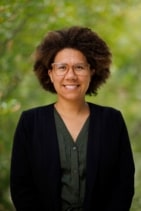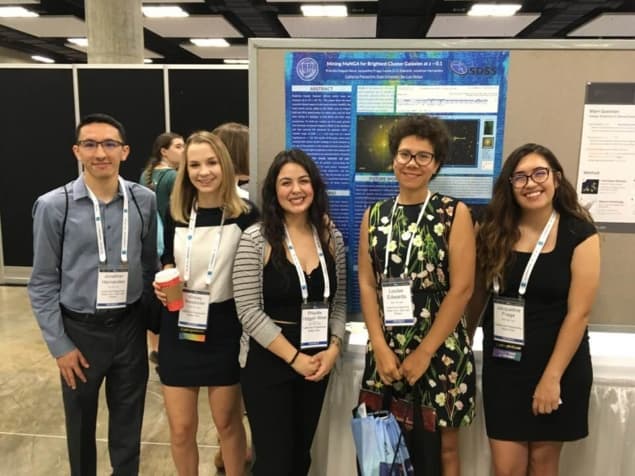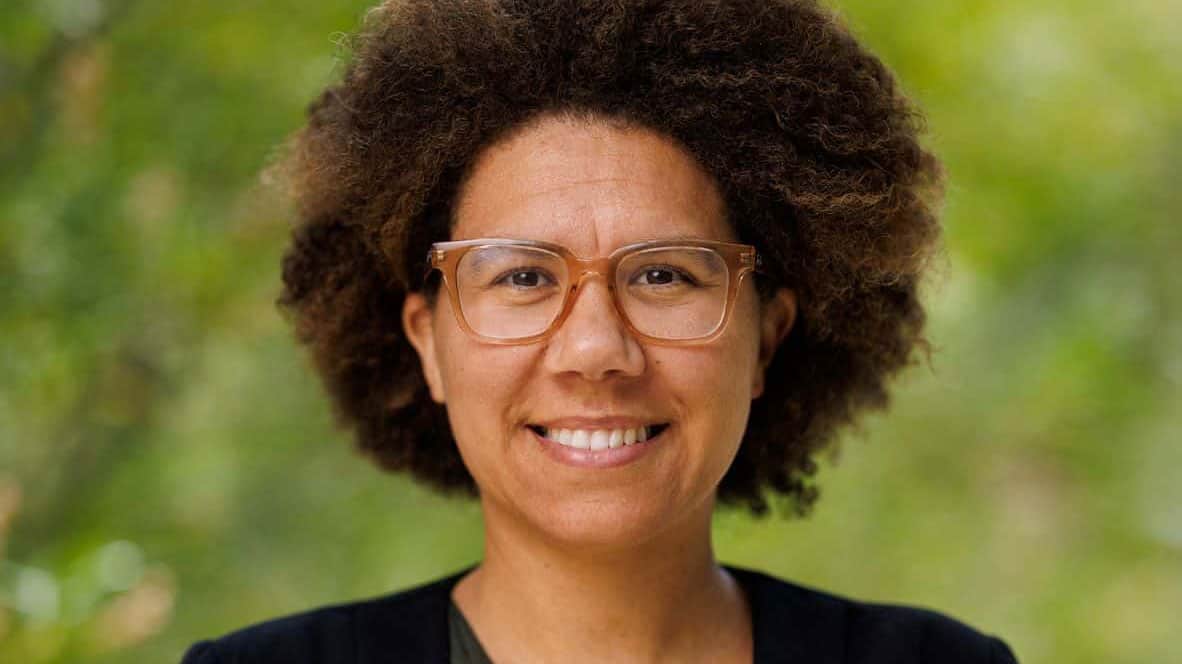This article is the first in a series of essays written by Black physicists and co-published with Physics Today as part of #BlackInPhysics Week 2022, an event dedicated to celebrating Black physicists and their contributions to the scientific community, and to revealing a more complete picture of what a physicist looks like. This year’s theme is “Joy in the diverse black community”.

I’m 16 years old, and I’m wearing my prettiest dress and tiny brown suede heels. I walk into the middle-school gymnasium, and it feels amazing. I’ve never been surrounded by this many Black nerds!
My family has made the trek from Victoria, Canada, to Vancouver to attend the Junior Black Achievement Awards. And I see that I am not the only one. I am not alone. I’m experiencing comfort, belonging, celebration and camaraderie.
This is joy. Whether as a child in Victoria or as an associate professor in San Luis Obispo, California, US, I have found that cultural and community connections have brought wonderfully joyous moments and experiences. I want to share some experiences inside and outside the physics world that have brought me joy.
Cultural traditions
Piiiiing ping ping. The unmistakable sweet sound of the steel pan (or steel drum) rings through the house. My father is practicing “Yellow Bird”, and the music is a portal. The song, credited to 19th-century Haitian composer Michel Mauléart Monton and lyricist Oswald Durand, was covered by many calypso artists in the 1950s and 1960s, when my father was a young man.
When I think of this music, I’m tapping into something bigger than myself: my history, my ethnicity, my Trinidadian roots. My father, a mathematics and French teacher, had moved from Trinidad, where at the time there were no higher-education institutions, to Canada in the 1950s to go to the University of British Columbia. But he often talked about home, seemingly dreaming about retiring to his homeland. My mother, an English and science teacher, has Scottish and Irish roots and grew up in Victoria.
Born in Victoria, I grew up pretty Canadian, but my dad shared this greatest joy of his with me: the steel pan. We would spend hours playing together. Starting with an oil barrel, you can cut the drum down to various depths so that different standing waves reverberate within. Once you tune the drums, you can make an entire band with the different-sounding instruments. I played the double second pan, two mid-depth drums hung side by side. The double second allows both high notes and beautiful deep ones. My father played the shallowest, highest-pitch lead instrument: the tenor pan.
During the winter holidays, we would apply for city busker licenses and play carols together along the causeway. I’d wear my puffy leather bomber jacket and full-length knit skirt (this was 1994), and he’d don dark trousers, a pastel-coloured button-up shirt, and a tan suede overcoat. These are happy memories for me: father and daughter out in the cold, my hours of practice coming to fruition as we perform “Joy to the World” and “O Christmas Tree” for passers-by.

There weren’t a lot of other steel pan players in Victoria. But each year our family would make the trek to join the larger Trinidad and Tobago community in Vancouver for the Caribbean Days picnic. The journey consisted of a two-hour ferry ride followed by another two hours in our colossal 1980s Chevy Impala station wagon – silver, with wood panelling – with my dad’s mix of soca, calypso and reggae blasting from the tape deck. I loved this family tradition because we’d get to hear the steel drums, taste the roti and curried goat, and see all the colourful costumes that folks were wearing for the parade. We’d get a chance to hang out with our Vancouver side of the family. I loved those times! It felt like I was a part of a community. This is joy. The joy of cultural tradition and community connections.
Finding and creating community
Those of us who follow an academic path often don’t get to choose where we make our homes. We may move to a new town for graduate school or a new country for postdoctoral positions. We must make our homes where we happen to land jobs.

For me, home is often somewhere with very small Black and Canadian populations. It isn’t usually obvious to others in my astrophysics circles that I’m Canadian. If I want to, I can keep a low profile (until I talk about going “oout and aboout toomorroh”). But as a physicist in North America, I constantly find myself the only Black person in the room – and sometimes the only woman. There are days, weeks, months that will pass in which that is the status quo. There is a special joy that bubbles up when I am not the only one. And I get that by engaging in cultural and community events.
For me, culturally focused activities have been important in academic settings as well. Black academic spaces allow me to exist free of the many negative stereotypes that surround Black folks. I can simply be, without fearing that my statements will be taken as representative of all Black people or that my mistakes will reinforce stereotypes about what Black folks can and can’t do.
If you, too, find yourself on a mostly solitary journey, what I’m writing may resonate with you. You might not have other Black folks in your classes or in your department. If so, my advice is to branch out. Reach out to chemistry majors or those in other departments. Look for student groups that focus on diversity and inclusivity issues. If a group like that doesn’t exist, create it. The community I live in, San Luis Obispo, is about 2% Black, but when we come together as a community, we can still fill a room.

Prioritization and a passion for science can get you through burnout
If sticking out in the physics world sounds foreign to you, I hope reading these words inspires you to reflect on how important these spaces are. Make room for students in your research groups or classrooms to find connections, and help them in doing so. And consider providing support for your students to attend meetings like the annual conference of the National Society of Black Physicists or the National Diversity in STEM Conference.
